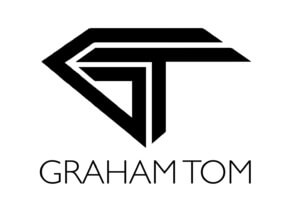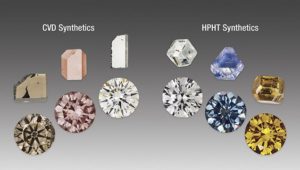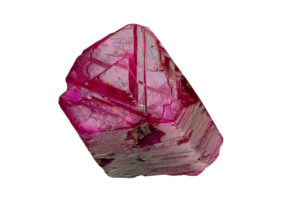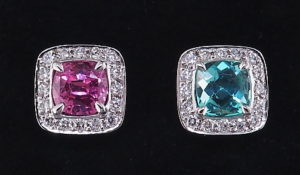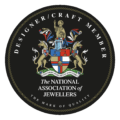Several clients have contacted me recently to raise a valuation for insurance purposes. They come into the Bourse waving their GIA reports with a satisfied smile. They explained that their bridal focal diamond was bought online at a great discount off Rapaport list or from a boutique in a mall in the Emirates at a great price. It is at this point alarm bells start to ring before I even start to gauge diamond measurements, proportions and assess mount. Why you may ask?
The diamond market currently is in a quandary where the price of rough diamonds offered at tenders/auctions are too high for diamond manufacturers to yield a profit and “sights” are being deferred to later dates. Polished diamond manufacturers are loading their inventory with very tight margins onto Rapnet, the largest diamond trading platform targeting wholesalers, diamond brokers and retailers.
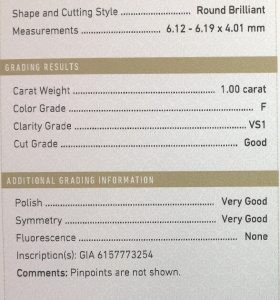
Borderline report for Cut 1.00 ct with weak measurements for stone
Better measurements for Cut 1.00ct stone

You then have an open market of willing buyers for bridal and lifestyle purchases of diamond jewellery with an eclectic mix of sellers of diamond jewellery all vying to be of service with access to Rapnet , including e-tailers, bricks and mortar retailers and boutique operators. But the market can arguably be closed for the diamond manufacturers especially in India and China as there is no liquidity to purchase goods and margins are being squeezed. As a result these diamond manufacturers try and maximise yield from the rough diamonds which are then sent off for grading to GIA laboratories. But when it comes to “make” of diamond which manifests as Cut, Polish and Symmetry on GIA reports, these diamonds are actually borderline stones.
Both diamonds identical weight with different Spread
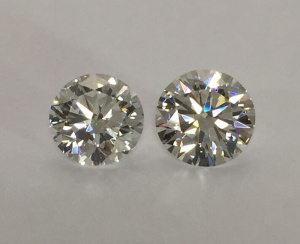

Left stone has very thick girdle and is deeper
I say borderline because the ideal measurements and proportions of an ideal cut can be compromised. For example above, if you take two 1.00ct F/VS1 carat brilliant cuts,(see reports 1a and 2a top) the diameter on an ideal cut should range from 6.35mm to 6.50mm (see larger spread right stone 1b) but a borderline diamond on a GIA report can easily have a diameter of 6.15mm-6.25mm and will appear considerably smaller against an ideal cut (see left stone 1b) These borderline diamonds also have a very thick girdle (see first stone to left 2b ) which can affect brilliance of diamond. The proportions on reports below left also highlight how deep the stone is with measurements which have been compromised. Borderline diamonds trade at a very significant discount and are attractive to willing buyers on a tight budget.

Borderline proportions 1.00 ct. Thick Girdle/Deep stone
Better proportions for 1.00ct stone Thin/Medium girdle/Better spread
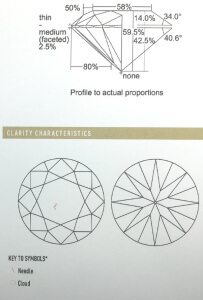
You also need to factor in clarity as quite often if a buyer requested an SI1 or SI2 diamond, a borderline diamond will have the inclusions to centre of table which can be seen by naked eye and not scattered to girdle or to pavilion. Again these stones trade at a very significant discount. Colour can also be borderline , remember diamond grading in all laboratories is subjective and not definitive and represent an opinion of the grader.
My point here is that in an ideal scenario, the willing buyer has choice where to purchase diamond jewellery. The buyer today is better educated with the 4C’s and information is freely conveyed online so please ensure you do your homework before you move forward. Make sure you buy from a reputable jeweller who has experience in the industry and do not get taken in with an offer of diamond at a cheap price online or in the malls as you will regret your borderline stone purchase on a GIA report should you wish sell it a later date.
Please call me on 0207 404 4022 / 07785 730 214 or leave a message on the contact page
